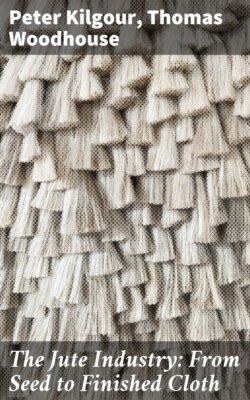Читать книгу The Jute Industry: From Seed to Finished Cloth - Thomas Woodhouse - Страница 13
На сайте Литреса книга снята с продажи.
CHAPTER IV. ASSORTING AND BALING JUTE FIBRE
ОглавлениеTable of Contents
The Indian raw jute trade is conducted under various conditions. The method of marketing may be of such a nature that the farmers in some districts may have to make a rough assortment of the fibre into a number of qualities or grades, and these grades are well known in the particular areas; on the other hand, the farmers may prefer to sell the total yield of fibre at an overhead price per maund. A maund is approximately equal to 8 lbs., and this quantity forms a comparatively small bundle. In other cases, the fibre is made up into what is known as a "drum"; this is a hand-packed bale of from 1½ to 3 or 3½ maunds; it is a very convenient size for transit in India.
Practically one half of the total jute crop, of 9 to 10 million bales of 400 lbs. each, is used in India, and the remaining half is baled for export to the various parts of the world; a little over one million bales are exported annually to Great Britain, the bulk of this fibre comes to Dundee.
It is practically impossible for foreign purchasers to see the material at the assorting stations, but the standardized method of assorting and grading enables a purchaser to form a very good idea of the quality of the fibre, and its suitability or otherwise for special types of yarn and cloth. Thus, a form of selecting and grading has been established on a basis that provides a very large amount of jute each year of a quality which is known as "a first mark." A mark, in general, in reference to fibre, is simply some symbol, name, letter, monogram or the like, or a combination of two or more, oft-times with reference to some colour, to distinguish the origin of the fibre, the baler, or the merchant.
In normal years there is also a large quantity of fibre of a better quality than what is known as "first mark," and this better quality is termed "fine jute"; while there is yet a further lot, the quality of which is below these good ones. Since there are hundreds of different marks which are of value only to those connected directly with the trade, it is unnecessary to dwell on the subject. The following list, however, shows quotations of various kinds, and is taken from the Market Report of the Dundee Advertiser of March, 1920. The price of jute, like almost everything else, was at this date very high, so in order to make comparisons with the 1920 and normal prices, we introduce the prices for the corresponding grade, first marks, for the same month in the years 1915 onwards.
